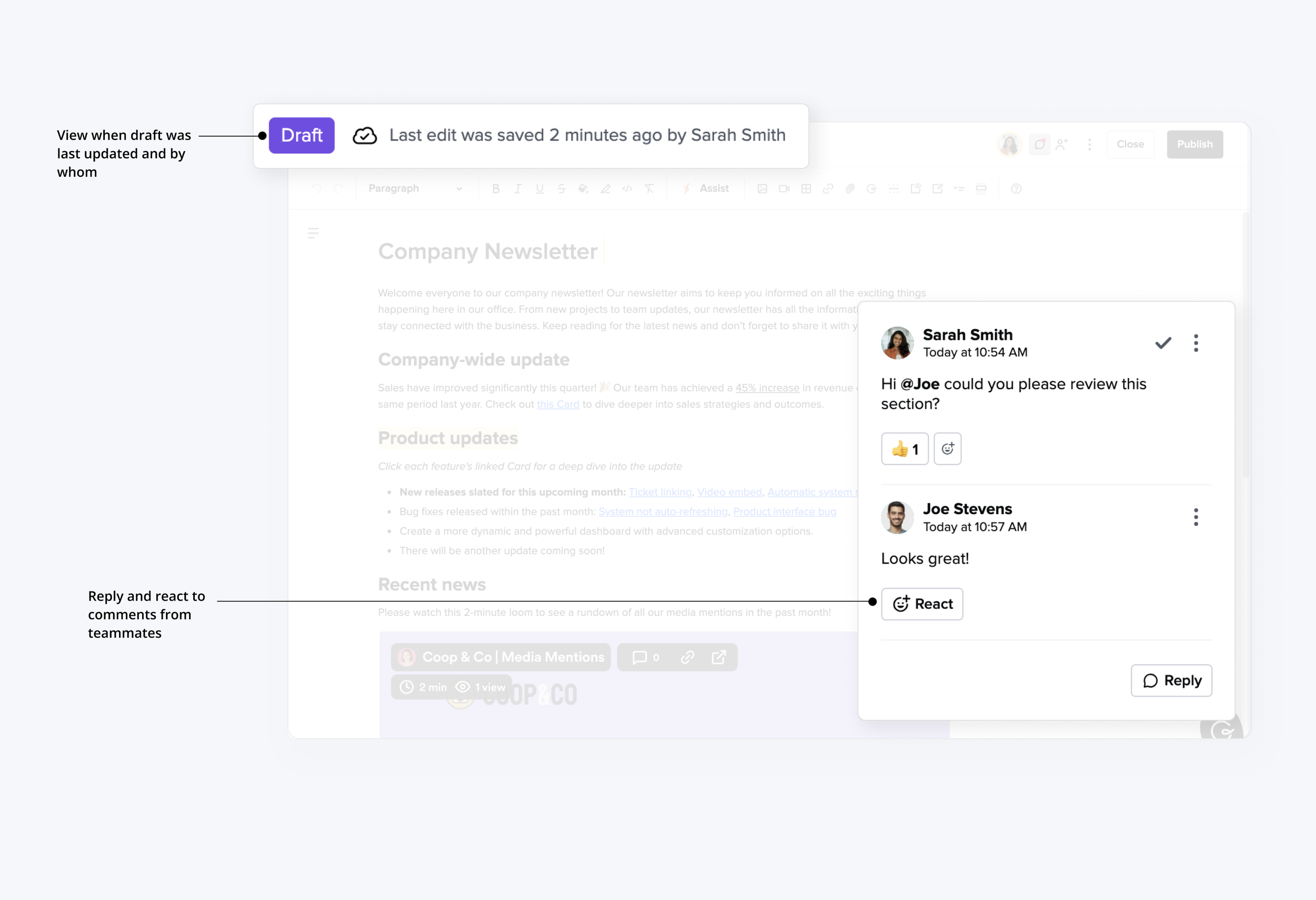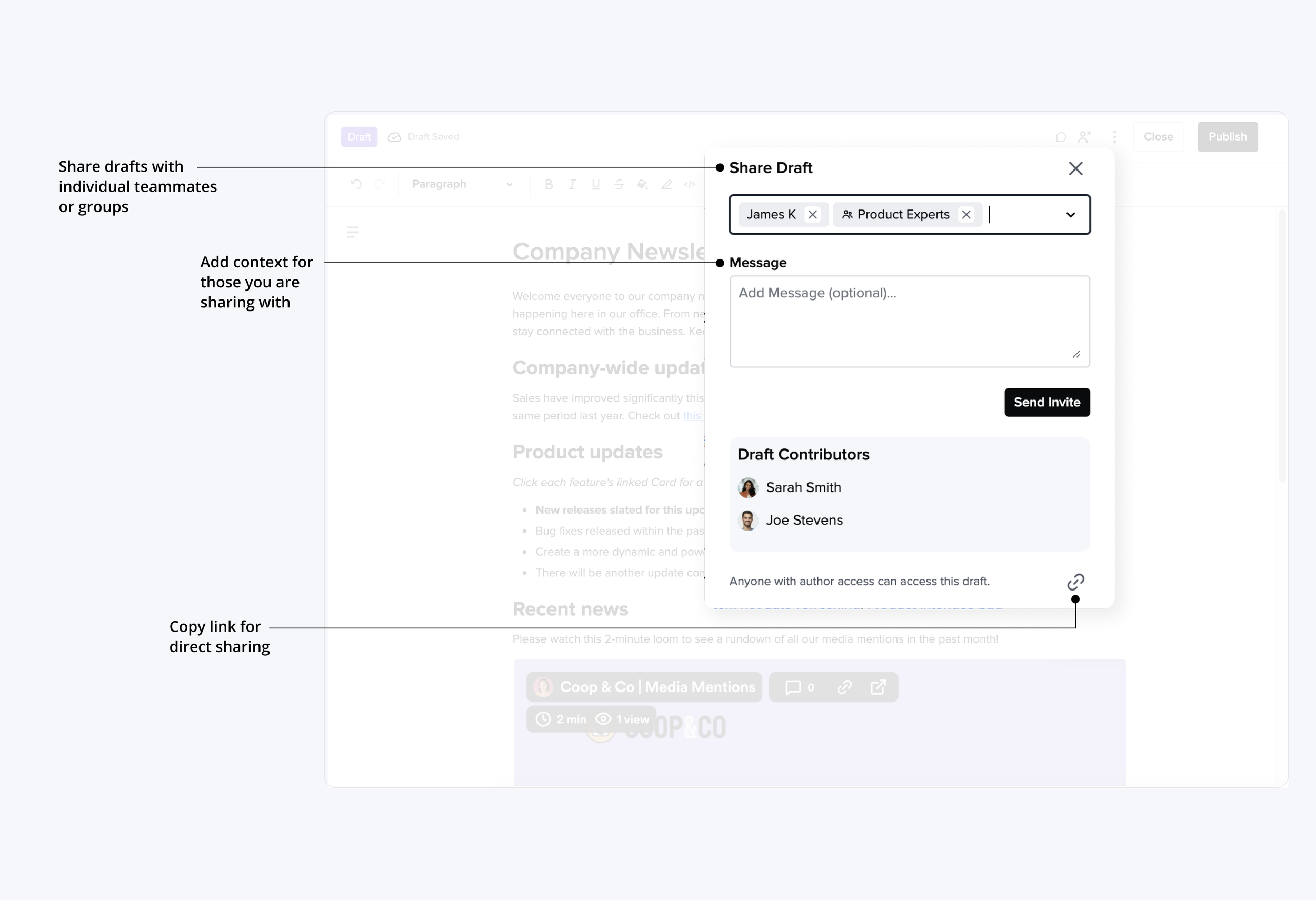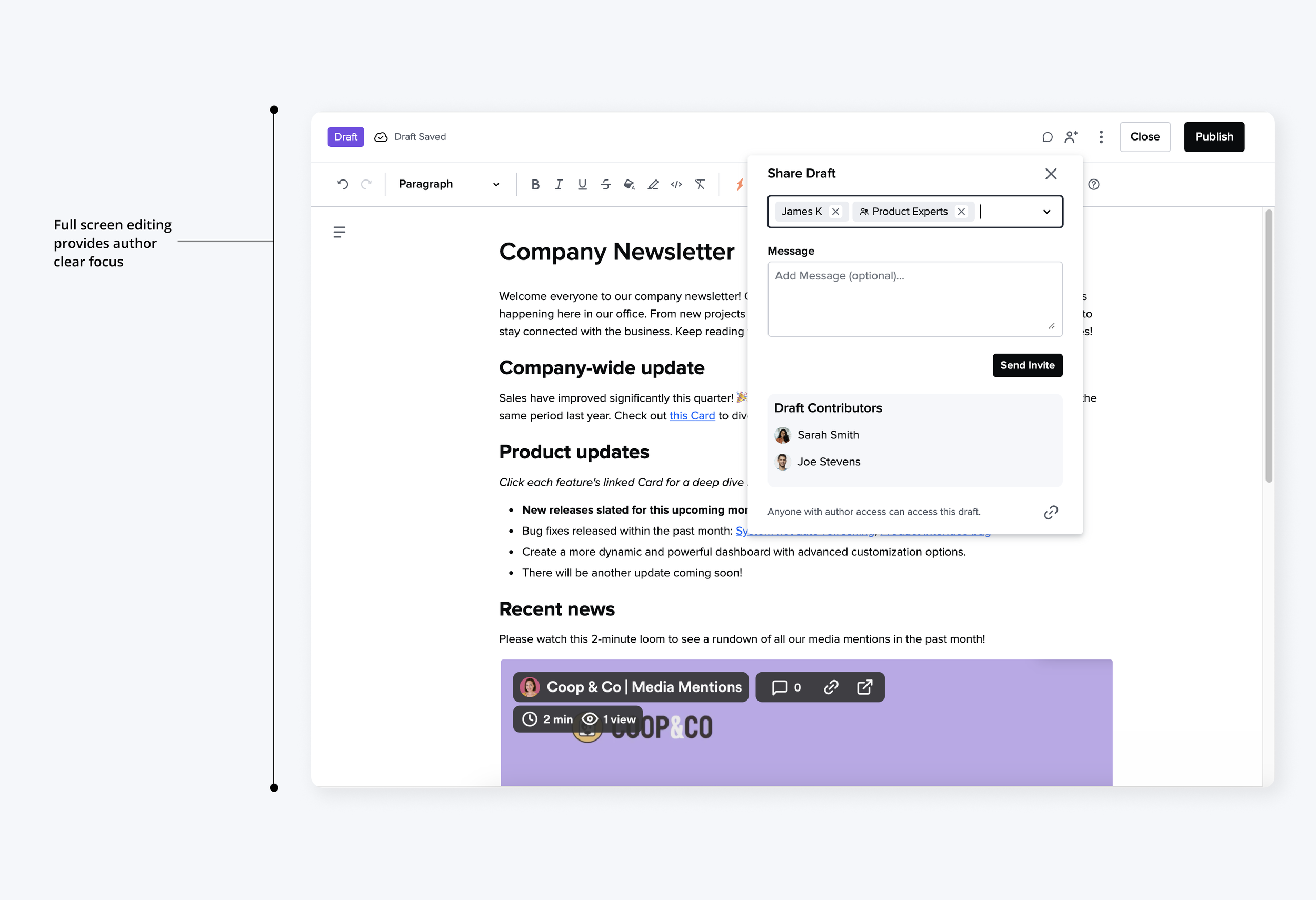Guru Editor
Empowering teams to create, collaborate on, and access information in one centralized, trustworthy place.
Responsibilities
Research
Product Direction
End-to-end Design
Date
January 2023 -
October 2023
Team
X-Function team of 8
What is Guru?
Guru is a knowledge management platform that helps teams organize and access the information they need to work efficiently. Guru functions as a single source of truth for company information cutting through the noise in a world of information overload.
Making author’s lives easier
A crucial part of the Guru experience is for those creating content (authors) to get the information they need into the platform. The Guru editor experience allows authors to create, publish, and verify content for others in their organization to access. After a large technical “editor rewrite” project to update some legacy tech, the editor experience was able to be updated with some long awaited, table stakes features.
Identifying High-Impact Features for Initial Focus
Based on lost sales deals and customer churn due to lack of specific functionality, it was clear that there was a long list of features that warranted attention for potential development.
Under a time crunch, my PM and I worked closely, doing some quick and dirty research gathering insights to give us initial direction. We leveraged our public customer community forum, had conversations with internal customer facing colleagues, and talked with users who were particularly invested in this part of the product. We identified several priority features for initial focus that would give us the most bang for our buck.
Feature Prioritization & Scoping
Since these features would touch each other technically and in the UX we needed to be thoughtful in the order with which we built.
This was a puzzle. I facilitated countless conversations with users, engineering, and our leadership team thinking through dependencies and implications. We decided on an approach which allowed for features to be built on top of one another and released sequentially.
Design Exploration & Feedback Loops
I began the iterative process of working through user flows, prototypes, and visual design solutions, gathering feedback from leadership, engineering, and customers at each step.
Engineering Handoff & Support
An often overlooked step. The importance of communicating, understanding technical constraints, and having conversations about tradeoffs are are crucial for a successful launch.
A seamless and robust editing experience
Authors now have the ability to seamlessly collaborate on content together. This functionality eliminates painful workarounds teams were resorting to as well as removes the need for users to bounce between tools (many users reported the supplemented this lack of functionality with Google Docs) resulting in a far more efficient experience.




Notifications integrate with users workflows.
Auto created Table of Contents that users can easily opt out of.
What I learned…
🧩
Find the smallest common denominator
When building a feature set and releasing along the way, I needed to be thoughtful in the sequence in which we build so features can be built on top of each other.
🎡
You don’t need to recreate the wheel
There are certain patterns users are familiar with and expect. I learned to be mindful of when to innovate and when to lean into what’s already working.
🔍
Do scrappy research
Even though I didn’t have a chunk of time or a formal project dedicated to research, I was able to collect insights based on information we already had. This was critical in shaping the solution.













